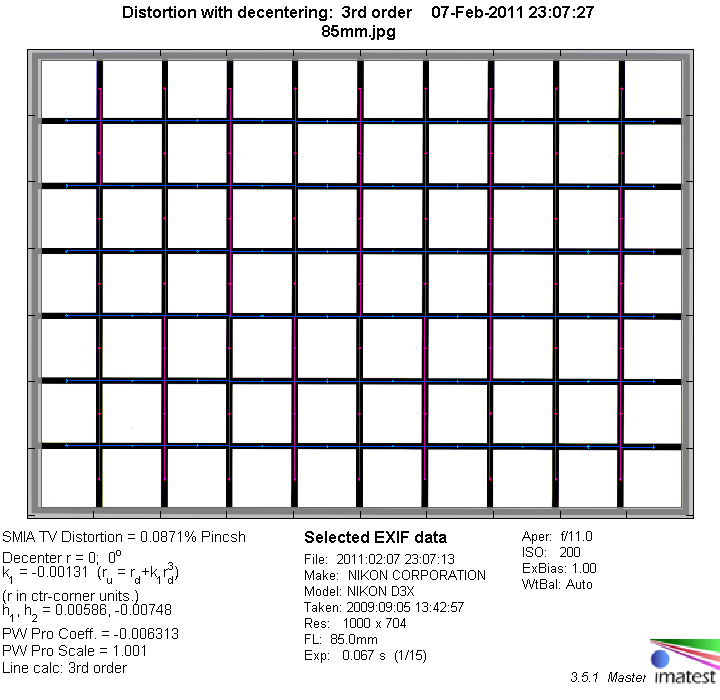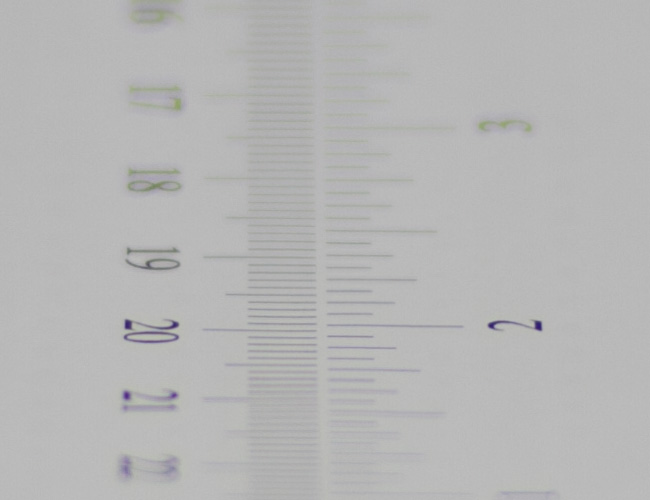|
Zeiss Planar T* 85mm f/1.4 ZF (FX) - Review / Test Report - Analysis |
|
Lens Reviews -
Nikon / Nikkor (full format)
|
|
Page 2 of 3

Distortion
The Zeiss ZF T* 85mm f/1.4 produces an absolutely negligible degree of distortion (~0.1%).

The chart above has a real-world size of about 120x80cm.
Vignetting
The Zeiss lens exhibits the typical vignetting characteristic for an ultra-large aperture tele lenses used on an full format DSLR. At wide-open aperture the vignetting is at ~1.2EV and still a bit visible at f/2. The problem is negligible from f/2.8 onwards.
We're performing our vignetting analysis based on
(uncorrected) JPEGs straight from the camera. The JPG engine of the Nikon D3x features a rather flat
gradation curve, thus has a moderate contrast characteristic, resulting in comparatively low vignetting figures - the
corresponding Canon figures are roughly 40% higher due to the more
aggressive default contrast setting.

MTF (resolution)
Ultra large aperture lenses tend to struggle on full format DSLRs but the Zeiss lens does a fairly good job here. The center quality is already very good at f/1.4 and the borders/corners reach good levels (albeit just). The contrast could be better though especially in close focus scenarios. There's a substantial boost in quality at f/2.8 with an excellent center. From f/4 onwards the borders/corners reach very good resolution. The peak performance is reached around f/5.6.
Please note that the MTF results are not directly comparable across the different systems!
Below is a simplified summary of the formal findings. The chart shows line widths
per picture height (LW/PH) which can be taken as a measure for sharpness.
If you want to know more about the MTF50 figures you may check out the corresponding
Imatest Explanations

Chromatic Aberrations (CAs)
Chromatic aberrations (color shadows at harsh contrast transitions) are relatively well controlled although we've seen better lenses in this class here. The average CA pixel width at the image borders varies between 1.1px and 1.7px. This may be visible upon closer observation but it's actually not really something to worry about either.

Bokeh
The bokeh (quality of the out-of-focus blur) is generally very good. Out-of-focus highlights are very evenly rendered. At large apertures the discs deteriorate to a "cat's eye" shape towards the image borders due to mechanical vignetting, but that's a rather normal behavior in this lens class. The blur is pretty smooth in the focus transition zones.

Bokeh Fringing
The Zeiss lens shows very pronounced bokeh fringing at large apertures - this is, again, typical for such lenses. These green/purple halos in the focus transition zones are very obvious at f/1.4 and f/2. There're still some fringing hints at f/2.8 although that's not overly field-relevant anymore.
You may also notice the focus shift (RSA) when stopping down from f/2 to f/2.8.
|
Move the mouse cursor over the f-stop marks below to observe the respective bokeh fringing
|
| f/1.4 |
f/2 |
f/2.8 |
|

|
|